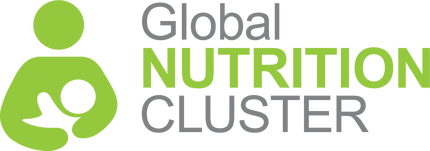Request support on coordination, information management, integration for nutrition outcomes or technical nutrition in emergencies assistance.
التماس الدعم لتنسيق التغذية وإدارة المعلومات والتغذية في حالات الطوارئ
Demander un appui pour la coordination de la nutrition, la gestion de l'information et la nutrition dans les situations d'urgence
Buscar apoyo para la coordinación de la nutrición, la gestión de la información y la nutrición en situaciones de emergencia
Solicite apoio para coordenação em nutrição, gestão de informação e nutrição em emergências
The ongoing crisis in Syria has forcibly displaced more than 11 million people and has decimated homes, public infrastructure, and essential services, including critical health care and water and sanitation systems.
Sadly, recent data revealed that Syrians living in Syria are worse off in 2023 than in 2022, according to the 2023 Humanitarian Needs Overview. Overall People in Need (PIN) has increased from 14.6 million in 2022 to 15.3 million in 2023 – including 5.3 million IDPs, 9.9 million residents, and 52,700 returnees, according to the Intersectoral Severity of Needs Analysis.
The Nutrition Cluster SMART Survey findings in Aleppo and Idleb governorates reveal that the nutrition situation is deteriorating. The combined Global Acute Malnutrition (cGAM) increased from 5% in 2022 to 5.6% in 2023 – specifically 6.5% in Aleppo and 4.9% in Idleb. The prevalence of stunting remains more than 20%, which falls into the critical/extreme category on the Global Nutrition Cluster’s severity scale, while exclusive breastfeeding rates dropped from 54.6% to 35% in Aleppo and to 37.8% in Idleb.

Only 1 in 3 children is consuming any eggs and/or meat products and only 1 in 2 children are consuming any vegetables and/or fruits. This reflects critical to extreme levels of undernutrition and/or malnutrition and is symptomatic of families’ limited purchasing power as a result of economic decline. This economic pressure has forced families to adopt unhealthy diets high in sugar and devoid of sufficient nutrients to cope with a lack of adequate and affordable food. It also has resulted in alarming high rates of anemia among children under five (37%) and women and adolescent girls (51%).
Employing Cash & Voucher Assistance to address nutritional needs
Cash & Voucher Assistance (CVA) can be an effective tool to addressing economic barriers to adequate nutrition. In the Syrian humanitarian response, top-up vouchers have been increasingly used to improve households’ access to fresh and nutritious foods. To achieve nutrition outcomes using CVA requires a high degree of collaboration. Nutrition actors must harmonize their approaches in terms of program design, cash transfer amount, the number of disbursements and the regularity of payments based on contextual feasibility and needs. In the North-West Syria (NWS) context, this requires close coordination also with the Food Security Cluster (FSC).
In early 2022, The North-West Syria Nutrition Cluster set up a CVA Working Group made up of representatives of other sectors to advance the use of CVA in the nutrition response. In 2023, the Operational Guidance for the use of cash and voucher assistance to improve maternal and child nutrition outcomes in North-West Syria was developed with technical support from the Global Nutrition Cluster Programming Team.
However, it became clear that there was a growing need for further training for actors in the area on the use of the guidance. Additionally, a number of Standard Operating Procedures (SOPs) needed to be developed to accompany the guidance to ensure it was being implemented appropriately and effectively in the complex operating environment of North-West Syria.
To assist, the North-West Syria Nutrition Cluster and the North-West Syria Cash Working Group called upon the Global Nutrition Cluster for support to equip nutrition and food assistance actors in the area with the necessary knowledge and training needed to implement CVA programming for nutrition programs effectively.
Jacqueline Frize, CVA for Nutrition Advisor, worked closely with the North-West Syria CVA Technical Working Group and the North-West Nutrition Cluster to develop a Training of Trainers (ToT) training package and prepare participants for cascading the material in Arabic among nutrition and food security actors inside North-West Syria.
Lessons learned
Close collaboration between the CVA Nutrition Advisor, the North-West Syria Nutrition Cluster, and the Steering Group made up of members from other sectors, was key to successfully completing the expected deliverables. Mercy USA, then took the lead for the cascading of the training package. Key takeaways from the consultation include:
Collaboration is key. The North-West Nutrition Cluster had done well fostering a strong working relationship with the Food Security Sector for interventions in the North-West Syria response, which contributed to the consultation’s success.
The training content was based on the Operational Guidance and gave nutrition and food security practitioners an insight into cash and voucher programming, but not the technical know-how of designing and delivering CVA.
Practitioners who joined the training are now trained on the guidance content and are in an ideal position to roll out the training with nutrition practitioners.
Given the limited number of actors using CVA to meet nutritional outcomes in the North-West Syria context, this training and material development was the first step towards allowing nutrition actors to implement CVA programming for specific nutrition outcomes.
One key recommendation moving forward is to incorporate the sessions about using CVA for curative nutrition programming into existing CMAM and IYCF trainings aimed at nutritionists.
Another recommendation is to use the sessions on implementing CVA to prevent malnutrition as targeted trainings for food security and nutrition actors.
Do you need technical nutrition support and assistance in your country?
Our team of nutrition advisors and experts are ready to answer your questions and support you in-country or remotely.
